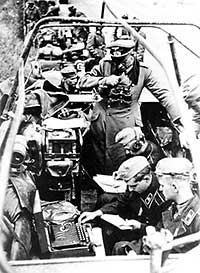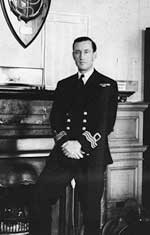Pioneers of Computing: Alan Turing.

Winston Churchill said the Allies won World War II thanks to his work, the “Nobel” prize of computer science is named for him,1 as is the test for machine intelligence,2 yet few outside the scientific community know his name. He is Alan Turing.
Background. Born 1912, Turing attended English public school (private school in U.S.), earned degrees from King’s College, Cambridge, and Princeton, had lifelong interests in math and science.
Almost every part of Turing’s life was exceptional. At age 16, he commented on aspects of Einstein’s work that Einstein himself wouldn't address for several years. At 24, he published “On Computable Numbers,” setting forth the theoretical foundation for digital computing. An avid marathoner, he nearly qualified for Britain’s 1948 Olympic team. His contributions to mathematical theory are legion.
Impressive, but so far just a boring nerd story. What’s not is his wartime work for British intelligence.

Cracked the Nazi’s Enigma Code. In 1938, Turing began working for Britain’s code-breaking unit. The day after war was declared, he reported for duty at Bletchley Park, the legendary war-time cryptography center. His assignment — break the German’s Enigma code.
Enigma was an electro-mechanical code machine. Rotors, rings and plugs could be used to change the code. Advanced models could produce as many as 158 quintillion (18 zeros) combinations. The Germans thought their messages were secure. Turing’s team proved otherwise.
They improved a Polish computing machine to crack the code. As the Germans modified Enigma to add complexity, Turing’s team responded to keep the information flowing. When short of needed resources, Turing appealed directly to Prime Minister Winston Churchill, who granted the request, directing “ACTION THIS DAY” and requiring an aide to report “that this has been done.”4

But number-crunching alone wasn’t always enough. A 1940 Enigma variation baffled Turing’s team. They needed an actual system to figure out the changes.
A plan was devised to “pinch” one: Crash a captured German bomber into the English channel; issue a distress call; steal the German rescue boat with its Enigma system. The plan was approved but never implemented, but its author, Commander Ian Fleming, went on to create similar missions for the legendary British intelligence agent, Commander James Bond.
Tragic Death. In January 1952 someone broke into Turing’s house. Turing gave the police a suspect’s name, revealing that his source was a man he was sexually involved with. Turing was then charged with gross indecency and pleaded guilty.
On June 8, 1954, Turing was found dead, a half-eaten apple by his bed. Death was due to cyanide poisoning and was ruled suicide, although no note was found and the apple was never tested for poison. Some believe he may have died from cyanide fumes inhaled while conducting an experiment.
Royal Pardon. As the centenary of Turing’s birth approached, efforts were made to clear his criminal record. In September 2009, Prime Minister Gordon Brown apologized for the government’s “appalling” treatment of him.
Vindication finally came on December 24, 2013, when Queen Elizabeth II, exercising her “Royal Prerogative of Mercy,” signed a pardon. Only three other royal pardons have been granted since 1945.
-----
- The Turing Award is given annually by the Association for Computing Machinery for major contributions of lasting importance to computing.
- The “Turing Test” says a machine can be said to "think" if a human judge cannot reliably distinguish between written interaction with it and a human.
- Photo taken in 1951 at the time of Turing’s election to the Royal Society. From print given by Turing’s mother to the National Portrait Gallery.
- Letter dated October 21, 1941 to Winston Churchill, reproduced in The Essential Turing, B. Jack Copeland (ed.), Oxford University Press, 2004.
- German General with Enigma. Photo from U.S. National Cryptologic Museum via ilord.
- Ian Fleming at the Admiralty during World War II. Ian Fleming web site.
This article originally appeared in our free semi-monthly newsletter. To receive future issues, please add your name to the subscription list.

